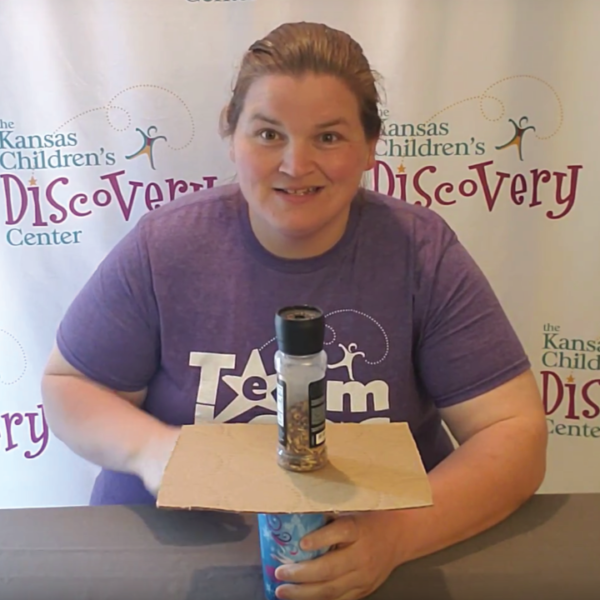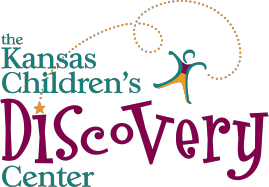Supplies:
- Large plastic cup
- Another object smaller and heavier than the cup, we used a plastic seasoning bottle
- Cardboard sheet
Directions:
- Set the plastic cup on the table.
- Place the cardboard sheet centered on top of the plastic cup.
- Place the seasonings bottle on top of the cardboard sheet. Make sure it is lined up with the cup so that it would fall into the cup if you removed the cardboard sheet.
- With one hand, hold the plastic cup.
- With your other hand, hit the cardboard so it clears the seasonings bottle and cup and flies away. (Be sure not to hit the seasonings bottle or cup with your hand).
- The seasoning bottle should fall into the plastic thanks to the inertia you created.
- It might take more than one try, so keep experimenting!
Ways to expand it
- Make it more difficult! Try multiple materials on top of the cardboard. Try materials that are different weights and compare the differences.
- Where else can you try this interia trick? With a tablecloth and place setting! Put down a thin piece of cloth or tablecloth on your table. Set your table using plastic pieces. Then, try to remove the tablecloth without the table settings moving!

What kids learn:
- Basic engineering skills. Engineers solve problems with constraints. They learn to solve problems by using the engineering design process: asking questions, coming up with solutions, building, testing and improving.
- Spatial or visual thinking. Being able to imagine the positions of objects and how they interact is an important skill for learning to navigate the world as a child and in the future.
- Experimentation! When kids experiment, they're learning how to learn. Failure is an important part of experimenting, so it is valuable to let kids try things that won’t work. It’s how they figure things out!
- Hand eye coordination. Young children can also use activities like fishing to help improve communication between their minds and bodies.
- Interactions between materials. The materials have different textures. It takes a different amount of force to remove the friction between the materials.
Vocabulary:
- Constraint: a limitation or restriction. Materials, time, and space are common constraints. Real engineers have to work around constraints all the time!
- Force: energy caused by a push or a pull, in this case, the pull created by gravity and other supports on the roof of your fort!
- Newton’s First Law of Motion: Every object will continue moving at the same speed or remain still unless something makes it change.
- Inertia: The resistance of an object to change its motion or direction.
- Friction: A force acting in the opposite direction. When two things rub together they cause friction.

